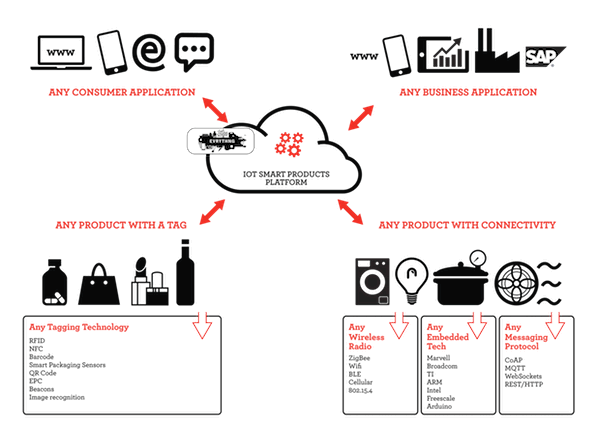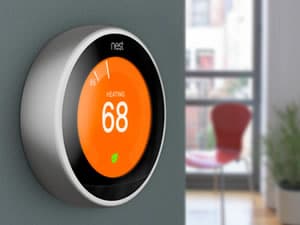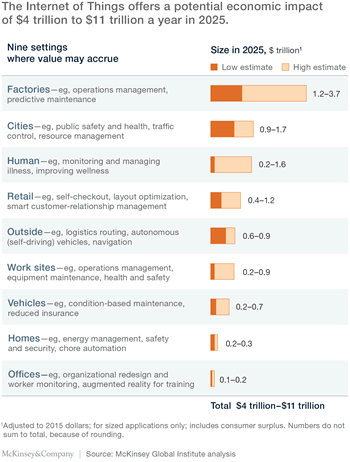What can the Internet of Things do for marketing? Or better: how can the usage of the Internet of Things in marketing better serve customer and business goals?
In a short article we already briefly touched upon the subject, looking at an infographic from marketing automation vendor Marketo.
In this post we take it a step further, especially as marketing is about more than the data-driven marketing context of the Internet of Things and because there are more opportunities than looking to change the traditional product relationship with smart devices and wearables alone.
IoT in marketing: the customer experience
The Internet of Things enables marketers to create totally different experiences in bridging the digital and physical world and certainly when they dare to think out of the box and beyond the pure aspect of personalized messaging.
Today, most Internet of Things projects today are about the optimization and automation of processes and goals that are only indirectly related with the customer and with customer experience as we mentioned when covering 2016 research from IDC.
However, in some industries, such as retail, there is a stronger external and customer-facing component, whereby the focus on customer experience and customer engagement is more important.
This is also the case in “soft” IIoT (Industrial IoT) applications, for instance in smart metering (utilities) and in insurance (whereby IoT is even used for pricing models), to name a few.
The opportunity for marketers in bridging digital and physical
Obviously the ‘connected consumer’ who is becoming hyper-connected once you start adding devices as happens in the Internet of Things, is a great source of data for marketing.
The other way, around the usage of the Internet of Things in marketing also enables marketers to provide highly contextual and tailored messages to consumers, for instance in connection with digital signage in physical situations such as in stores or via mobile or other devices in digital interactions.
In the shopping environment of retail, marketers are increasingly looking at IoT. Research shows that the customer is often key in a retail IoT business case (more about the Internet of Things in retail with graphical examples here).
According to Juniper Research, customer engagement, along with asset control, is even core to the business case in a retail Internet of Things context as the research firm said in research, announced end of 2015, in which it looked at the spend on Internet of Things in retail.
Whether it concerns retail or other industries, the main strengths of the Internet of Things in marketing have everything to do with an essential part of the Internet of Things as such: data and data analytics.

Marketing is very data-driven nowadays and the gold mine of Internet of Things data is very attractive to marketers.
However, it is also one of the areas where we need to take extra care because of the often private nature of the data which are leveraged for Internet of Things in marketing purposes. New regulations such as the EU’s GDPR (General Data Protection Regulation) are important here.
How do marketers use the Internet of Things?
How is the Internet of Things used in marketing? We already gave a few examples but here are more.
Marketo, a marketing automation vendor and thus very active in the data-driven space was one of the first to take a look at it.

In the infographic below, which we also used for the previously mentioned short blog post, you see some key data and findings. First it must be said that when Marketo speaks about the Internet of Things it looks more at the Consumer Internet of Things with its smart wearables and smart thermostats with Nest as the obvious example.
Still, the Internet of Things in marketing is about much more than that.
This is the reason why we focused on retail so much. Fortunately Marketo also looks at, for instance, real-time, point-of-sale notifications. We must be careful though. Marketers tend to think in terms of messages and campaigns too often. While that is important, the main power of data, as data professionals know, is to understand patterns and to create actionable knowledge and insights. And actions certainly aren’t about messages and campaigns also in marketing. That’s just the easy part.
The Internet of Things: beyond marketing messages
Marketo knows this as it emphasizes the possibility to analyze customer buying habits and gaining deeper insights in the buying journey.

Nevertheless, marketers must realize that they need to leave their pure marketing viewpoint of understanding and acting with messages in real-time. They must understand that the customer experience is an end-to-end given and that they need to work with other divisions to remain relevant.
That’s why we have a bit a problem with the definition of the Internet of Things as you can see it on the infographic below: “IoT is the interconnectivity of our digital devices that provides endless opportunities for brands to listen and respond to the needs of their customers – with the right message, at the right time on the right device”.
It isn’t just about the digital devices of consumers and it certainly isn’t just about the right message.
In our example of in-store messages on smart digital displays it can be about a message. But it can also be about interacting with a touchscreen to consult information on products and how they would look (also think about smart fitting rooms for instance).
The Internet of Things in marketing should be about end-to-end experience optimization
The “right information at the right time and place and so forth” message is one that we have been hearing for ages in information management, in the supply chain and so on.
And it’s very important. But if we look at the customer holistically and want to be real customer-centric and data-driven champions, the opportunities of the Internet of Things in marketing are at least as much about several other aspects than just messages.
Here are a few examples of how everything – not just in the Internet of Things – is connected in marketing from the customer perspective.
- If supply chains don’t work properly, customer experience will suffer, no matter how good your messages.
- Marketers can also use data on customer behavior to enable better experiences or better arrange and present the products they sell, for instance in a shop.
- Real-time engagement might be one goal but real-time optimization, beyond the message context is even more important, also outside the strict marketing environment.
- And, last but not least, it isn’t just about the buying journey and the resolving of issues to get happier customers.
Internet of Things in marketing requires thinking outside the box
While this all important, when executed well and when establishing trust regarding data usage, the real power of the Internet of Things in marketing lies in the ability of marketers to think out of the box and optimize for their customers in a much broader way, regardless of touchpoints or stages in the overall customer life cycle.
Better listening and engagement are a start. Better service should be a no-brainer, customers see that as a just basic business nowadays. Better end-to-end customer experience is another ball game. And here the IoT can play a role, not just in the context of the Consumer Internet of Things but also in Industrial Internet of Things applications where simple value can be created.
Just one example: how often have you been looking for a parking spot around your favorite mall or store and how easy would it be for that mall or store to set up a small-scale and cost-effective way to let its customers see available parking spots within their favorite apps, maybe even branded?
Or what about smart packaging solutions? Developing applications that enable to connect specific products in ways that consumers haven’t experienced before? New ways of delivering goods? And in a not so far future 3D printing? The opportunities for product marketing shouldn’t certainly be overlooked by the way and, in the end, marketing is not the same as marketing communications.
The use of the Internet of Things in marketing is really about thinking outside of the box and offering relevant services in the most valuable ways for the ‘real’ customer in real life. Or in other words a holistic, customer-centric and integrated marketing opportunity.
Below is the Marketo infographic we tackled previously.

Top picture: purchased on Shutterstock. Copyright: LanKS. All other pictures: see mentioned owners in image description and links.


